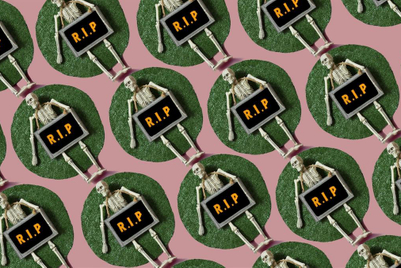
Recently we’ve been looking at what drives business growth for our clients. You might be surprised what we discovered as the number one factor, by far.
Some might have guessed the standard media-related choices like the right budget, or the right levels of investment by media, or the ability for precision targeting. Perhaps some would have even guessed it’s the ability to phase in line with consumer’s purchase habits, or the ability to harness performance, programmatic and big data.
It’s true that all of the above do exhibit substantial influence to some extent, but the number one influence on business value is—unequivocally—the ability to harness the power of creativity.
At this point, some creative agencies could be forgiven for sharpening their swords. I can almost hear some of my colleagues: “Ha, you see! Proof substantiating what creative agencies knew all along.”
What makes our findings unique is that this creativity that we’re talking about is not the traditional creativity that you think; it’s not creative advertising nor display copy. The true exponential power of a brand’s commercial creativity rests in its ability to become the entertainment, and not—I stress—the disruption of entertainment.
Through a modelling project that measured a whole series of ‘communication ecosystems’, we discovered that the best campaigns have engaging content that consumers actively seek out at the heart of the approach. Not vice versa. This is not to disregard advertising display outright. But the findings do suggest ad copy can be made a lot more powerful if it engages in a real value exchange, rather than disrupting with a message that manages to churn out a reason to believe, a product demo, a product benefit and an emotional hook all in the span of 25 seconds.
We are able to get to a fairly accurate understanding of exactly what types of effects from communication have the largest contribution to influencing business. Here’s three key learnings that improve business value within the context of creativity in communications:
- The better joined up the content experience, the stronger the interconnected whole. In other words, the whole is more impactful than the sum of the individual parts.
- The more fluid the consumer experience, the stronger the business impact. In other words, planning for cross-platform experiences as opposed to single platforms improves the overall and indirect effects.
- Bespoke, fit-for-screen content greatly improves performance. In other words, 'matching luggage' creative or running display or TV ad copy is not advisable. Develop content that matches the environment.
The above all point to the simple sentiment that the best and most powerful communications are ones that create a connected experience for consumers, with engaging content sitting at the heart. This is what creativity is. And it has the biggest impact on business performance—up to 50 percent more in some instances.
If the power of creativity is centred around the ability to create an engaging consumer experience, one that focuses on connected content that is both entertaining and valued, then it is the convergence and proliferation of technology and scalable media that makes it happen at a rapid pace.
The way people consume information and entertainment, where they connect and share, and where they now choose to buy things continue to evolve at a blistering pace, particularly in this region. We are much more connected and interconnected in our consumption of media content.
The impact from the digital economy is not only limited to changes in consumer behaviour but also now fundamentally influences and is reshaping how we work with many of our clients.
There is a lot of blurring happening within the industry with traditional creative agencies starting to get better at ecosystem content and moving more into media specialties. And media agencies are becoming better resourced and more sophisticated in content production. It feels like we might meet somewhere in the middle.
The upside is that there are massive opportunities to engage with consumers around content experiences. And this has massive implications in the way we design and construct advertising, or as we now commonly refer to as “connected consumer-brand experiences”.
So in effect, the power of a great idea hasn't changed, but the ability to design and amplify a great idea certainly has. Many would suggest this is self-evident. And I agree. But why then are some clients still seeking disruptive ad copy?
Clay Schouest is regional strategy leader at Carat, APAC




.jpg&h=334&w=500&q=100&v=20250320&c=1)
.jpg&h=334&w=500&q=100&v=20250320&c=1)
.jpg&h=334&w=500&q=100&v=20250320&c=1)
.jpg&h=334&w=500&q=100&v=20250320&c=1)

.jpg&h=334&w=500&q=100&v=20250320&c=1)


.jpg&h=268&w=401&q=100&v=20250320&c=1)


.jpg&h=268&w=401&q=100&v=20250320&c=1)


.jpg&h=268&w=401&q=100&v=20250320&c=1)
.jpg&h=268&w=401&q=100&v=20250320&c=1)